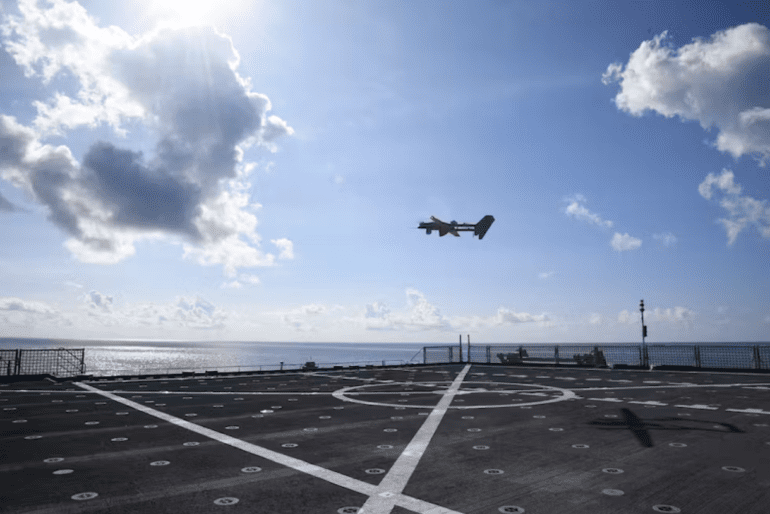- NOCTRNAL, developed by NAWCAD, automates aircraft side number recognition on carrier flight decks.
- Uses AI-driven OCR technology to enhance accuracy and efficiency in flight deck operations.
- Integrates with PATRIOT project for real-time situational awareness using existing CCTV systems.
- Designed to minimize human errors and optimize deck management during complex operations.
- Potential applications extend beyond carriers to include other environments with similar visibility challenges.
Main AI News:
The Naval Air Warfare Center Aircraft Division (NAWCAD) at Joint Base McGuire-Dix-Lakehurst, N.J., is at the forefront of advancing flight deck management capabilities with its Night Operations Character Transcription & Recognition for Naval Aircraft Logistics (NOCTRNAL) algorithm. This innovative system aims to automate the identification of aircraft side numbers using state-of-the-art Optical Character Recognition (OCR) technology driven by artificial intelligence (AI). By accurately reading and recognizing aircraft identifiers, NOCTRNAL integrates seamlessly into the broader PATRIOT project, known as Panoramic Tracking of Real-time Information for the Ouija Tabletop. This initiative seeks to enhance real-time situational awareness and operational efficiency on carrier flight decks.
The traditional method of manually reading and relaying aircraft identifiers has inherent challenges, including human error due to poor visibility, visual obstructions, or task saturation. These errors can disrupt the finely tuned orchestration of flight deck operations managed by the Aircraft Handling Officer (“Handler”) in coordination with the Air Boss. NOCTRNAL addresses these challenges by leveraging existing flight deck cameras, thereby minimizing the need for additional onboard sensors. This approach ensures compatibility with current CCTV systems on Nimitz-class carriers and future panoptic systems planned for USS Ford-class carriers.
Dr. Todd Morehouse, lead of the NOCTRNAL project, emphasizes the algorithm’s non-intrusive nature, affirming its ability to recognize existing aircraft markings without requiring modifications to on-deck sensors. The OCR capabilities of NOCTRNAL, specifically tailored for carrier environments, represent a significant leap forward in automating complex operational tasks beyond aircraft identification. These capabilities could potentially extend to other automated text recognition applications in environments with low visibility or obscured conditions, such as commercial airports.
While specific deployment timelines remain confidential for security reasons, ongoing testing of NOCTRNAL on simulated and real-world datasets aims to optimize its performance under various environmental conditions. This testing includes evaluating its effectiveness in challenging operational environments to ensure reliable and accurate performance. As naval aviation evolves to incorporate more unmanned systems like the MQ-25 Stingray tanker, NOCTRNAL’s integration with these future platforms underscores its pivotal role in advancing the automation and efficiency of air combat operations.
Despite its transformative potential, the implementation of NOCTRNAL raises important considerations regarding the maintenance of situational awareness among deck personnel. As automation increases, there is a simultaneous need to ensure that critical operational insights and oversight are maintained for effective command and control on carrier flight decks. The NOCTRNAL project continues to explore these challenges, aiming to deliver a comprehensive solution that enhances operational capabilities while addressing the evolving complexities of modern naval aviation.
Conclusion:
Implementing NOCTRNAL marks a significant advancement in naval aviation operations, leveraging AI to automate critical tasks previously prone to human error. This innovation not only improves efficiency and safety on carrier flight decks but also sets a precedent for broader applications in automated text recognition across diverse operational environments. This initiative underscores the growing integration of AI technologies in enhancing operational capabilities within the defense sector, signaling a transformative shift towards more efficient and reliable air combat management.

